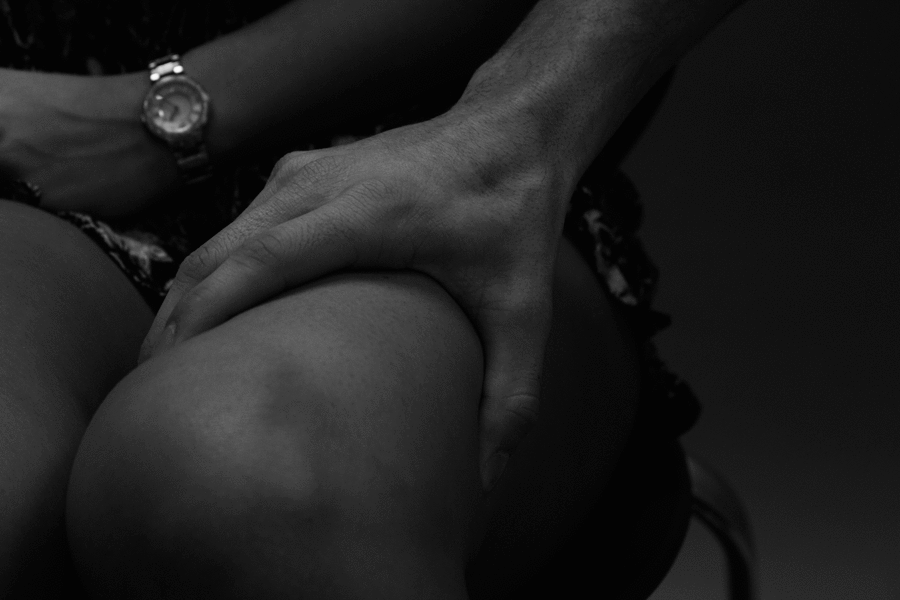I Wish They Knew What “No” Meant
Rape: one of the most talked about subjects in today’s society, but yet rarely spoken about in the right light.
Constantly warned about, but, instead of prevented, it is promoted with a culture of rape jokes; victim blaming and shaming; and subtle promotion in music, television and advertisements.
Many argue these insensitivities are the reason sexual assault occurs less than every two minutes in America, and each year there are 293,000 sexual assault victims and 98 percent of rapists will never spend a day in jail. This is rape culture, and, although it may not be obvious, it’s everywhere.
It seems that women are taught from a young age not to walk home alone at night, especially in a dark alley; not to talk to strangers; and how to defend themselves against a predator. But why are the same steps not taken to teach people not to sexually assault? On the contrary, popular culture promotes rape through songs such as “Blurred Lines” and athletes who seemingly get let off the hook because of their celebrity status.
Despite the promotion of rape culture, the media can still be beneficial in raising awareness of sexual assault, such as with the recent I Stand With Ke$ha movement in which celebrities and social media users around the globe stood up to show support of singer Ke$ha after her alleged rape and abuse by her producer, Dr. Luke. But even so, many of these stories of rape and sexual assault tend to focus on it happening to celebrities or it being an issue solely on college campuses. Oftentimes the fact that rape happens in high school is completely overlooked.
In fact, 44 percent of rape victims are under the age of 18, but yet a staggering 68 percent of sexual assault cases never even get reported to the police.
“I think that some high school and college boys are manipulators,” senior Andi Leineberg said. “It’s not always obvious when [sexual assault] is happening, which is sad and scary.”
Part of the reason for these misconceptions and lack of reported cases of sexual assault are the assumptions society has created for what rape is and isn’t.
Rape doesn’t just mean you were cornered in a dark alley and forced into sex. Rape can occur if you are awake or unconscious, the rapist could be a stranger or a close friend and consent does not just consist of giving in to the other person. If there was force involved, or the victim felt too scared to physically resist or say the word “no,” then it was still rape. The lines of sexual assault are oftentimes not black and white, which allows for the victim to often feel too embarrassed, scared or dramatic to report to incident.
“I think that sometimes victims feel that what happened to them was not rape,” senior Amanda England said. “But really they were convinced or forced by their rapist to do something that they really didn’t want to do just so the guy wouldn’t be angry with her. I’ve seen so many things on social media about girls being beaten or killed just for saying no. Feeling uncomfortable in school or in a social setting should not be acceptable the way it is right now.”
The stigma that surrounds rape is that only women can be raped. Not only are cases of rape against men rarely talked about, but many men themselves are even in denial that rape can exist between a woman against man or a man against a man.
“We are a country founded on stereotypes, especially stereotypes that construct our gendered identities and beliefs,” English and media teacher Patrick Johnson, who spent his graduate school career studying masculinity and its impact on identity, said. “Traditionally, men are expected to be powerful, dominant and in control. Any sign of weakness is a sign of femininity, which creates a culture of misogyny and hate. This in turn affects our understanding of situations related to power struggles.”
Rape is not about a gender or weak and strong people. It is about the violation of human rights and those affected by it. As shocking as it may be, one in every 33 men will experience an attempted or completed rape in their lifetime; that means that 2.78 million men in the United States have been raped or otherwise sexually assaulted.
“Rape and sexual assault are problems that can happen to anyone, no matter their race, gender, class, age, religious belief, sexual orientation and more,” Johnson said. “The true problem, however, is that we stigmatize the victims and solidify this problem as a gendered one.”
There are many misconceptions of rape across the board, but especially so when the victim is a man. Many like to believe that girl against girl, man against man or girl against man rape is not “real” rape. It does not matter who the victim was, it just matters that there was a victim.
“Men can be sexually assaulted,” Johnson said. “It isn’t a sign of weakness. It isn’t a sign of femininity. It isn’t a sign of metaphorical castration. Dudes can feel pain and be preyed upon because they are human. When we stop thinking of sexual assault as a gender issue, we may begin to find a solution of how to talk about it, address it, and, hopefully, fix it.”
Cases where men fall victim to women are often taken far less seriously than when a woman is assaulted by a man. The misconceptions about what it means to be raped and who can get raped are all part of the rape culture that society has built. When rape is spoken of, more times than not it is referring to a woman being raped, which in turns leaves the male victims voiceless and damaged.
Despite the statistics, the news stories, the media campaigns and the warnings, rape still remains a distant topic to most. Rape and sexual assault always seem an arm’s length away, always happening to someone else, somewhere else. What many neglect to realize, or rather, what many hide in the back of their minds, is that rape happens at the places closest to home and even within the halls of Antioch Community High School.
***
At 14, most girls are worried about how their hair looks for school, or what movie to go see with their friends this weekend. For Betty, a student whose name was changed to maintain anonymity, things weren’t that simple. At just 14 years of life, she was forced into a situation that many will never have to encounter in their lifetime. At 14 years, Betty had to experience what every parent wishes for their daughter to never have to endure. At 14 years, she was stripped of her most basic human right: to say no.
“I had my first encounter with rape when I was a freshman in high school,” Betty said. “I was pinned down and raped by someone I had known my whole life.”
After the assault, Betty, like so many other victims of rape, was too scared to tell anyone or report the incident, instead keeping it bottled up inside for years. In the years following, Betty was put in the same situation many times to follow, only this time, it was with her significant other.
“I don’t think people realize that rape can occur with someone you love. It’s not always someone in a dark alley, y’know?” said Betty, “there were times it was consensual, but many times I was being abused. It’s such a hard situation to know you are being abused by the person who you loved.”
Like so many others who fall victim to these terrible events, Betty didn’t speak out after her first sexual assault, or her second or for many, many more times after.
Who do I tell? How do I tell them? Is this going to get me into trouble? What if they don’t believe me? Will people think of me differently?
Being in a situation similar to Betty’s is never easy. It’s never easy to tell such a traumatizing experience to another human being, but eventually, it must be done.
After gaining the bravery to tell her mom what had happened, Betty escaped from the relationship and the sexual assault.
“To anyone who is in the situation that I was in or is in that situation one day, my only advice is to get out,” said Betty, “they say it won’t happen again, but it’s more than likely that it will. Over and over again. And you need to get out as soon as possible because it will only get worse.”
***
The cries for help from the voiceless are not going unnoticed, especially when it comes to rape and sexual assault at both college campuses and high schools. In recent years, an effort to uphold Title IX–which provides the basis for eliminating hostile environments and sexual assault within public schools–and to educate individuals on their rights guaranteed by Title IX has spurred. Title IX protects any person, regardless of gender or sexual identity, from sex-based discrimination and requires that every school has a clear and safe plan to deal with sexual assault inside their halls. Groups such as Rape Abuse & Incest National Network, Know Your IX and Stop Sexual Assaults In School are working towards educating the public, providing a support system for sexual assault victims and promoting the active implementation of Title IX in all schools. Together, they are trying to put a stop to campus assaults.
There are enough statistics about rape, sexual assaults and rapists to read all day long. But at the end of the day, it’s not about the number. It’s not about the statistics. Because each victim of sexual assault is not just a number. Each victim is a human, a human that was deprived of their most basic right, a human that deserves justice. It’s not about reading a statistic about sexual assault and having it go right over your head. It’s about putting an end to the rape culture that allows rape jokes, gender stereotypes and victim blaming. It’s about creating a truly safe environment for everyone, no matter the gender, no matter the race, no matter the sexual orientation, no matter if they are at home or at school. It’s about putting an end to rape.


